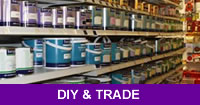Operating System: You should always choose the EPoS software you intend to use first, as the software vendor will determine the specification of the hardware, operating systems and peripherals on which their software has been designed to operate.
There are very few EPoS software applications available for the Apple Mac computers. Most EPoS software is designed to run under Microsoft Windows. Recently, applets for mobile PDA's such as the Apple Ipad have become available that allow for a limited degree of remote ordering.
As EPoS systems tend to be business-critical functions, most software is specified to run on slightly older versions of Microsoft Windows, such as Windows XP and EPoS versions of these, known as WEPOS. Newer operating systems, with claims of bells and whistles new features, will always tend to have bugs and untested features which can take many months or years to bed down. A lot of established EPoS peripherals do not have device drivers available for recent releases of operating systems.
Installation: As for installing the EPoS software, this usually depends on the software vendor. The more established, widely-used international EPoS software packages can be readily installed by most users themselves, even on a multi-user network. The less established packages, or those that use SQL database servers, will not have such streamlined installation procedures, and may require attendance by an engineer or remote-access to setup and configure.
In either case, for a multi-user system, the tasks of network cabling and configuration of workstations to connect to the network, will most likely require an experienced professional to perform them.
Setting Up: Most EPoS software packages have a set startup routine, either via on-screen 'Wizard' or following through a User Guide, to setup the reference data. This would include items such as staff login names, passwords, security levels, product manufacturers, product categories, product details, pricing details, supplier details, stock information - current stock levels, minimum/maximum stock levels. It may also include defining requirement such as VAT/tax tables, layouts of forms/reports, and other operational characteristics.
Depending on how extensive your product range is, you will need to allow anywhere from a few hours to a few days to perform the setup of the reference information. Some people are put-off EPoS system by this lengthy exercise, but if it is considered as a one-off investment, the ongoing benefits well outweigh the cost and time of setup.
Usage: Many off-the-shelf EPoS software packages are intuitive and very easy to use. Most users who have basic MS-Windows application software experience can figure their way around the EPoS software, consulting the on-line help where necessary, and work out how to perform the common tasks on first use. Less established software from smaller vendors or more sophisticated systems from larger vendors may be more complicated to setup and operate, and a staff training session may be required.
Reporting: Generally, EPoS software, provides a much wider range of management reports related to stock, sales, staff, suppliers, profit and customers. The ability to print to an A4 printer, with either charts and graphs or statistical reports and summaries, as well as the facility to transfer data between sites and to a head office gives it a considerable advantage over cash registers. Combined with the cosmetic advantage it gives your store, the ability to choose and vary individual EPoS hardware components, the easier use for staff, the faster throughput for customers and the upgrade path to grow with your business, you should try to opt for a Windows-based
EPoS system unless your requirements are very basic and/or your budget is very restricted.
Choosing between different EPoS Software: The basic features of EPoS software - selecting products, registering payments, making corrections, printing receipts, firing open the cash drawer, printing end of day sales reports - are common to all the available packages.
You should look at the other features of the software which are on your requirements list, and check how the software supports those.
Some solution providers will position themselves as specialists for a certain market sector or industry (eg. hair salons, dentists, dry cleaners etc) and load a premium onto their pricing to reflect this. You should always find out what specific features distinguish the claimed exclusivity and check whether such features are available in more widely used general purpose off-the-shelf mainstream software packages first at a much lower cost and reduced risk.
Risk is reduced by opting for a mainstream EPoS software package that is sold worldwide. It gives you more choice in terms of ongoing upgrades and access to wider number of dealers who you can go to for support requirements. A small specialist software package with a smaller customer base will leave you and your business in the hands of the software provider or individual developer. If your business would come to a near standstill without a functioning POS system, then we recommend you only choose an established, proven, stable EPoS software package that is widely used. All the software chosen and offered by us falls into this category.







